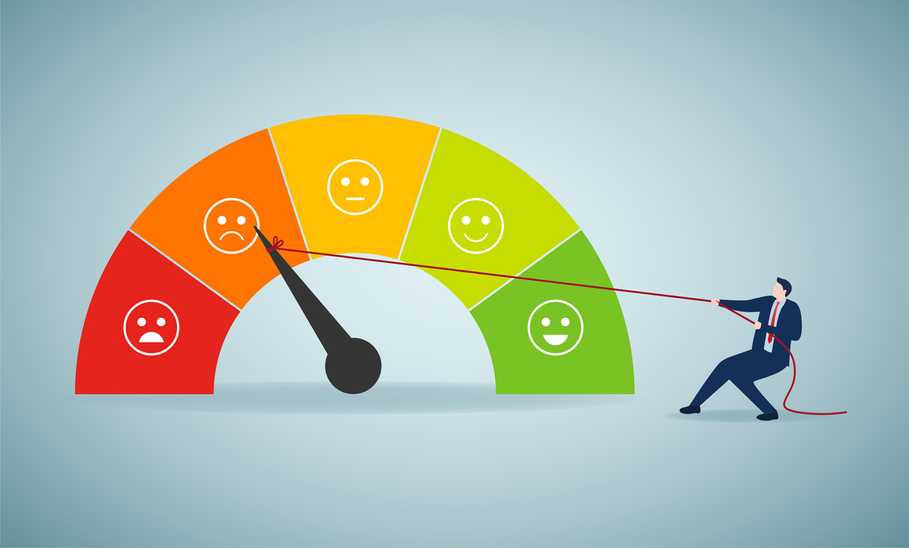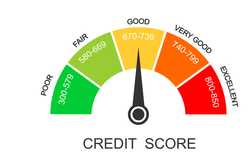600 Credit Score: Is It Good or Bad?

Our evaluations and opinions are not influenced by our advertising relationships, but we may earn a commission from our partners’ links. This content is created by TIME Stamped, under TIME’s direction and produced in accordance with TIME’s editorial guidelines and overseen by TIME’s editorial staff. Learn more about it.
Any FICO® Score that falls within the range of 580 and 669 is considered to be a fair credit score. Fair credit scores are below average in the eyes of lenders. While a score of 600 won’t disqualify you from being approved by lenders, it can make things, such as getting a loan or credit card, a little more challenging and will almost always lead to higher interest rates.
In this article we’re going to take a closer look at exactly what a 600 credit score means, the types of loan products you can expect to be approved for, and ways to improve your credit score.
FICO Scores range between 300 and 850. Having a 600 credit score places you in the fair credit category and some lenders might see you as being a high-risk borrower. However, it doesn’t always mean you won’t be approved for certain loans. Instead, you’ll need to prove yourself in other ways.
Compensating factors such as a higher-than-average income, low outstanding debts, and solid employment history can all help lenders look beyond your credit score. However, it’s important to know that even if someone with a 600 credit score is approved for a loan, it will likely have a higher interest rate compared to someone with a higher credit score.
If you have a 600 credit score some credit cards with attractive rewards and benefits are going to be unavailable to you. However, there are still several cards available that will allow you to improve your credit score. Some even offer a few perks.
The card_name is one of the best cards available to someone with a 600 credit score. Not only will it give you the opportunity to improve your score, but you’ll also earn an unlimited 1.5% cash back on each purchase. This card comes with a annual_fees annual fee.
The annual_fees annual fee card_name is a great card for anyone looking to build or rebuild their credit. Similar to most secured credit cards, you’ll be required to have a $49, $99, or $200 refundable deposit. This amount will act as your credit limit. Payment history will be sent to each of the three major credit bureaus which will help with your credit-building efforts.
The OpenSky® Secured Visa® Credit Card is another popular secured card for rebuilding credit. The best part about this card is that there is no credit check which means your credit score won’t affect your approval odds. You’ll just need to put down a security deposit between $200 and $2,000, which will serve as your credit limit. There is an annual fee of $35, but each month your payment history will be reported to the three main credit bureaus.
Other than a credit card there may be other financial products and needs you’re interested in filling. You may be unsure if you’ll qualify with a credit score of 600. Here’s what you need to know.
If you’re thinking about buying a new car you might need an auto loan. Or you might be interested in a personal loan to consolidate debt. Even though your credit score is 600, you may still be approved for such loans. Just be aware that they’re going to cost more than if you had a higher credit score.
According to an Experian Information Solutions Automotive Finance Marketing report for Q3 2023, the average APR for a 60-month new car loan was 11.86% for people with credit scores of 501 to 600, 9.29% for scores of 601 to 660. However, someone with top scores of 781 to 850 would pay just 5.61%.
While having a credit score of 600 isn’t going to prevent you from getting a mortgage, your options will likely be limited. Conventional loans are typically only available if you have a credit score over 620. However, FHA loans are available with a 3.5% down payment to anyone with a credit score over 580. These loans are backed by the Federal Housing Administration and require borrowers to have mortgage insurance.
Each landlord is different—some might be willing to lease an apartment to someone with a 600 credit score, while others might require tenants to have a higher score.
There are things that can help your case if your score isn’t where it should be. Because most landlords are going to pull a credit report as part of the rental process, make sure they see a positive rental history and minimal late payments over the past couple of years. These are signs that you’ll be a good tenant who pays rent on time each month.
A credit score of 600 can impact you negatively in a number of ways, such as less favorable loan terms. As your score begins to improve, the impact will become less.
Even though you might qualify for certain loan products with a 600 credit score, they’re going to cost you more. Lenders adjust the interest rate you qualify for based on your credit score. The lower your score, the higher the interest rate. This means the cost to borrow is more for someone with a 600 credit score than it would be for someone with a 700 credit score.
As we mentioned earlier, there could be additional fees involved if you’re borrowing with a 600 credit score. For example, if you’re applying for an FHA loan, you’ll also be required to pay for mortgage insurance, which wouldn’t be required if you qualified for a conventional loan and made a 20% down payment.
Want access to better credit cards and lower rates on loan products? Then you’ll want to focus on improving your credit score. Here are some of the best ways to move your credit score from 600 to 700 or higher.
Improving your credit score will start with monitoring your credit and tracking your progress. You can request a free copy of your credit report each year from Experian, TransUnion, and Equifax. The first thing you should always do is check for errors. Inaccurate information happens and it can have a negative impact on your credit score.
Once you’ve verified the information, look a little closer at what’s affecting your score. Maybe you have late payments on your credit card. You can call your credit card company and ask them if there is anything that can be done. Maybe you have a medical bill that you forgot about and it was sent to collections. Call the collections agency and ask it if it will wipe the negative mark off your credit report if you’re willing to pay the balance in full.
You can utilize credit score monitoring tools, such as Experian ECW.
The amount of credit used, also known as your credit utilization, makes up 30% of your credit score. Ideally, you never want to use more than 30% of your available credit. One of the best ways to make sure your spending stays in line with what you can afford is to use a budgeting app.
Tools like Monarch and Simplifi allow users to understand exactly where every dollar is going each month. Understanding your expenses and making sure you don’t overspend will be a big step in preventing credit card debt going forward.
One of the worst things you can do to your credit is pay your bills late. Late payments can stay on your credit report for up to seven-and-a-half years. To avoid late payments, set up automatic bill payments. Most credit cards allow you to automatically pay your full balance, statement balance, or minimum payment each month. You can also use a product like Cash App to automatically pay each of your monthly bills.
Keeping your credit utilization low is the second most important piece of your credit score. Your credit utilization is the amount of credit you’re using compared to your credit limit. Ideally, you never want this to be greater than 30%. Those with the highest credit scores tend to have single digit credit utilization ratios.
Beyond paying down your credit card balance, the best way to lower your credit utilization ratio is to ask your card issuer for a credit limit increase. If you have a good payment history, they’re likely to approve your request. You’ll just want to make sure they don’t perform a hard inquiry on your credit since this will temporarily lower your score even further.
RELATED: Best Unsecured Credit Cards for Bad Credit
Typically utility payments are not reported to credit bureaus. However, services like Experian Boost will give you credit for on-time payments on cable and streaming services, cellphone, utilities, and even rent. You’ll even be able to choose the payments you want to include. The only downside to Experian Boost is that only lenders pulling your Experian credit report will see the positive effects.
Having a credit score of 600 isn’t ideal, but it’s still possible to get a loan or a credit card. Most loan products will end up costing you more due to higher interest rates. However, with some hard work, you can improve your credit score and open up new, more attractive options.
Approximately 17% of Americans have a fair credit score. This is a score of anywhere from 580 to 669.
A FICO® Score of 600 is considered to be a fair credit score. A score of 670 to 739 is considered good.
If you have a 600 credit score, you’ll be able to raise your credit score faster than someone with a 700 credit score. Just remember that you’ll need to pay your bills on time and pay down your credit card balance each month.
The best way to go from a 600 credit score to a 800 credit score is to make sure you pay your bills on time each month and keep your credit utilization low.
The information presented here is created by TIME Stamped and overseen by TIME editorial staff. To learn more, see our About Us page.






